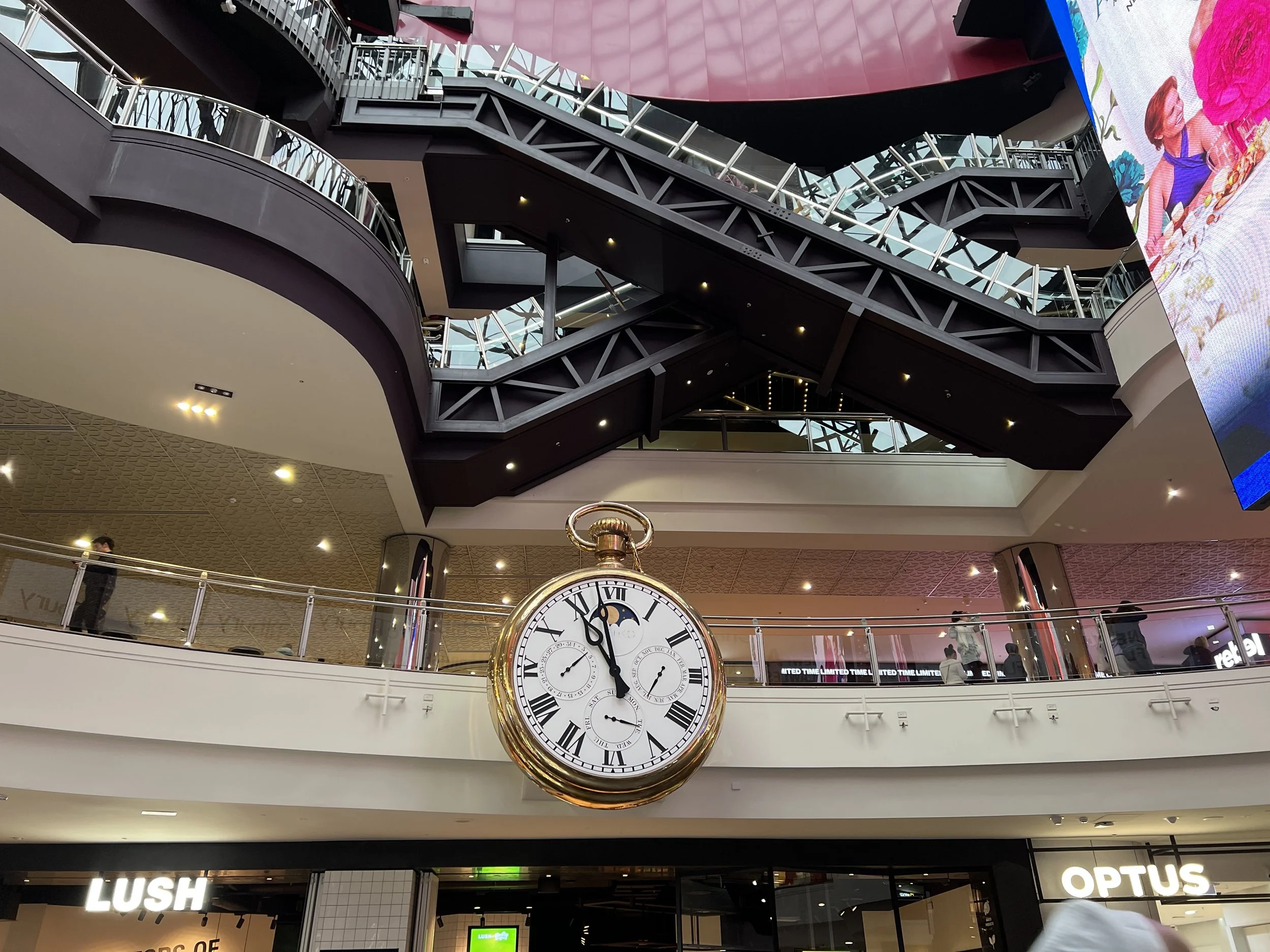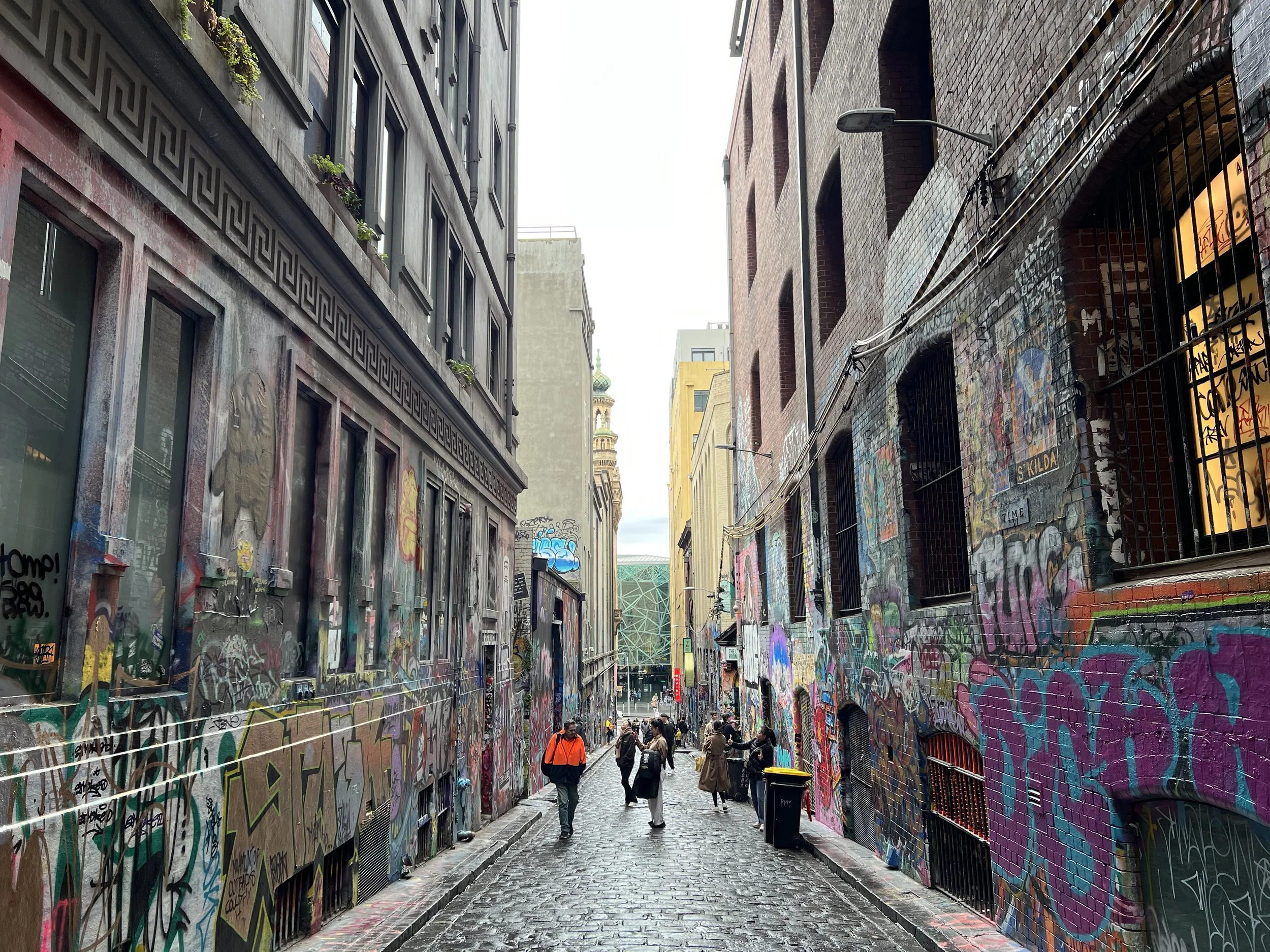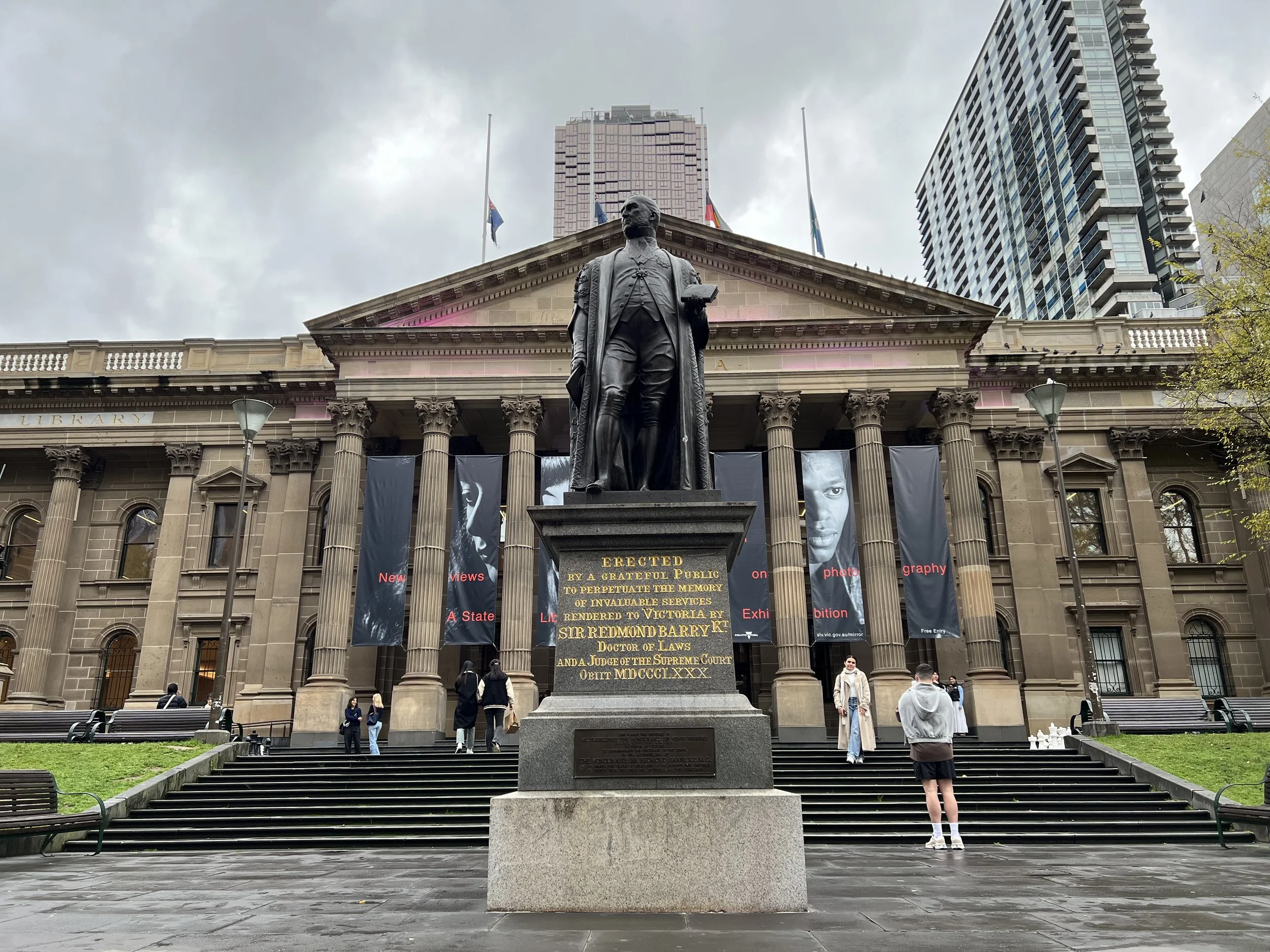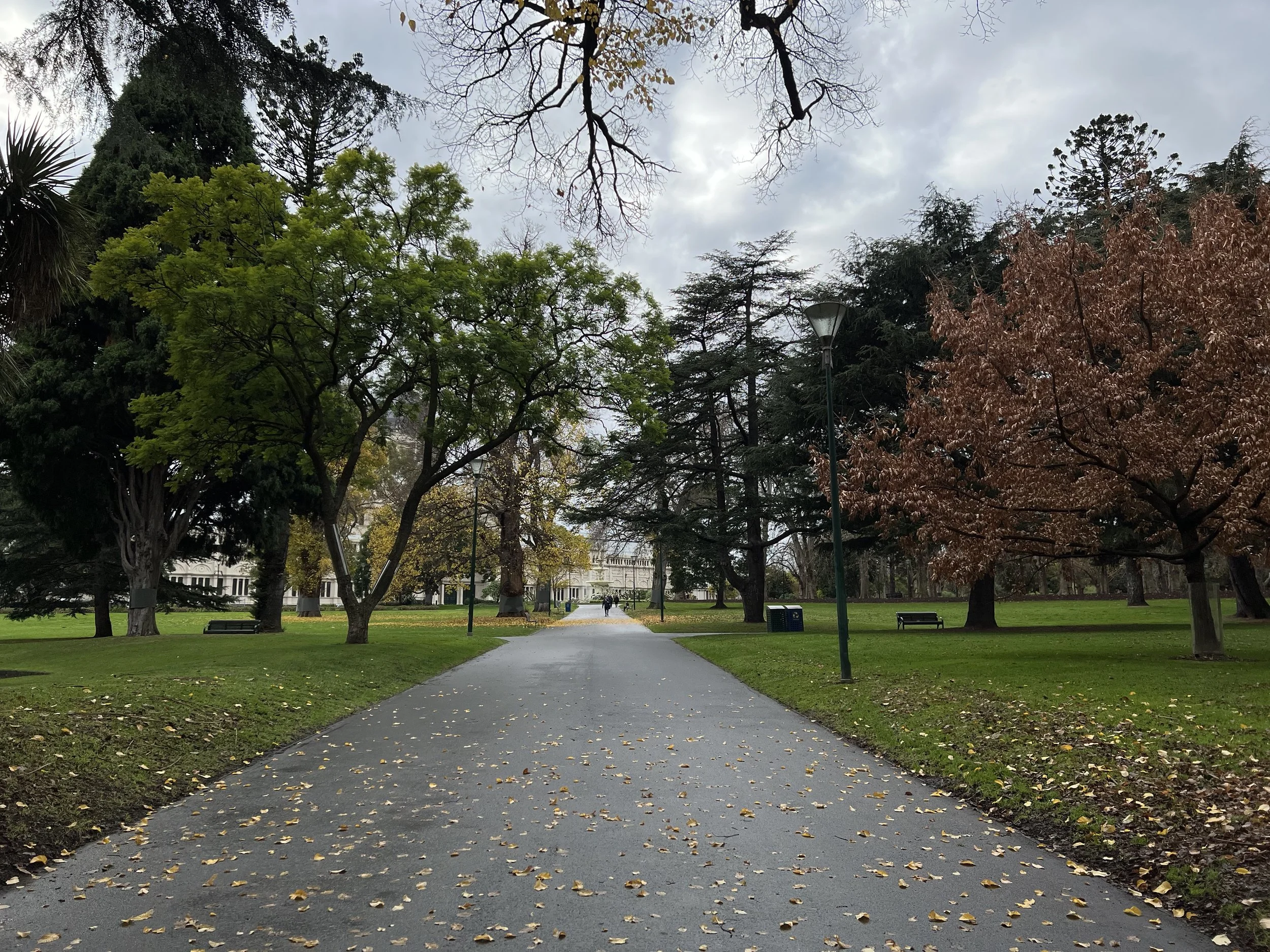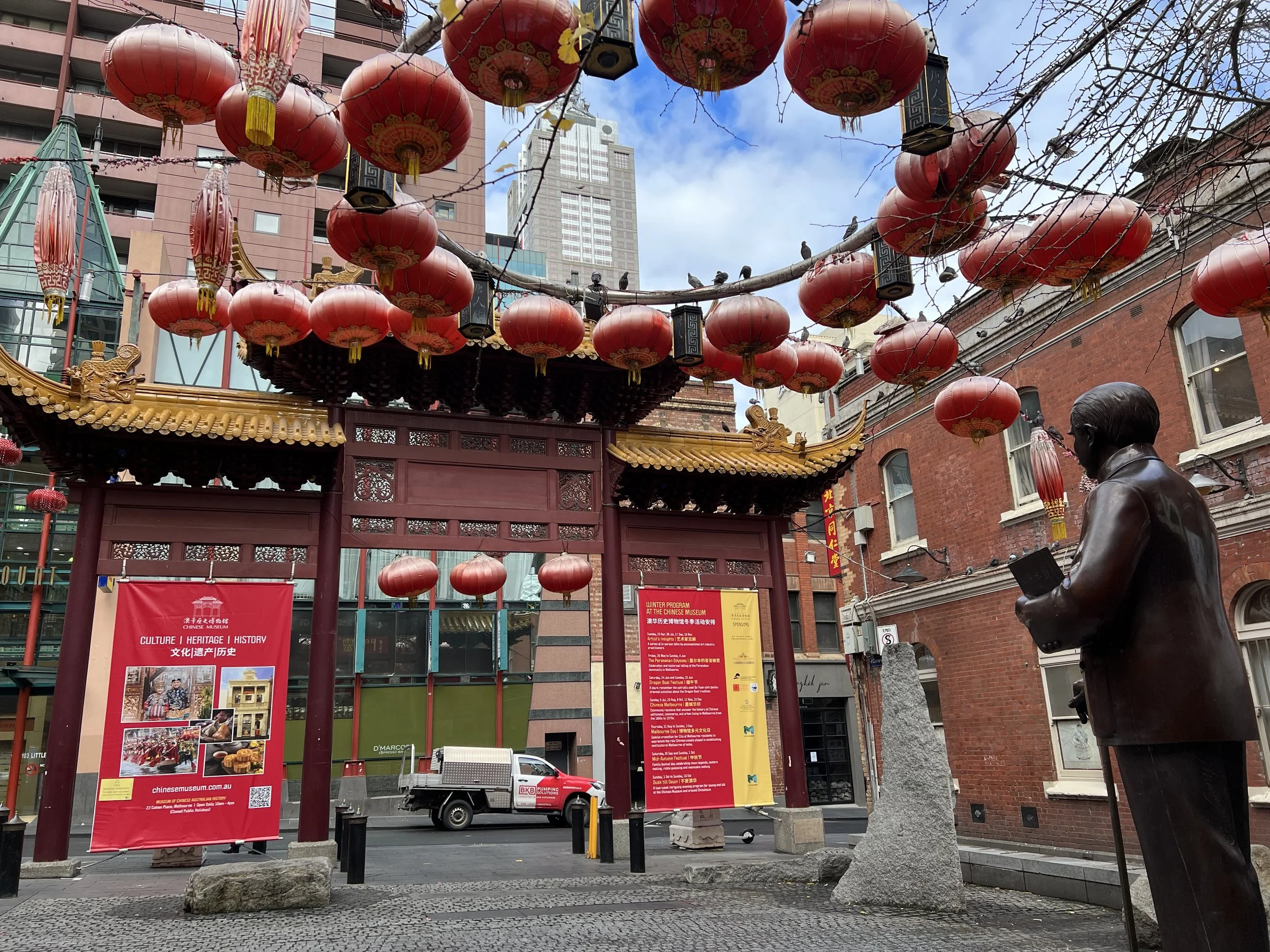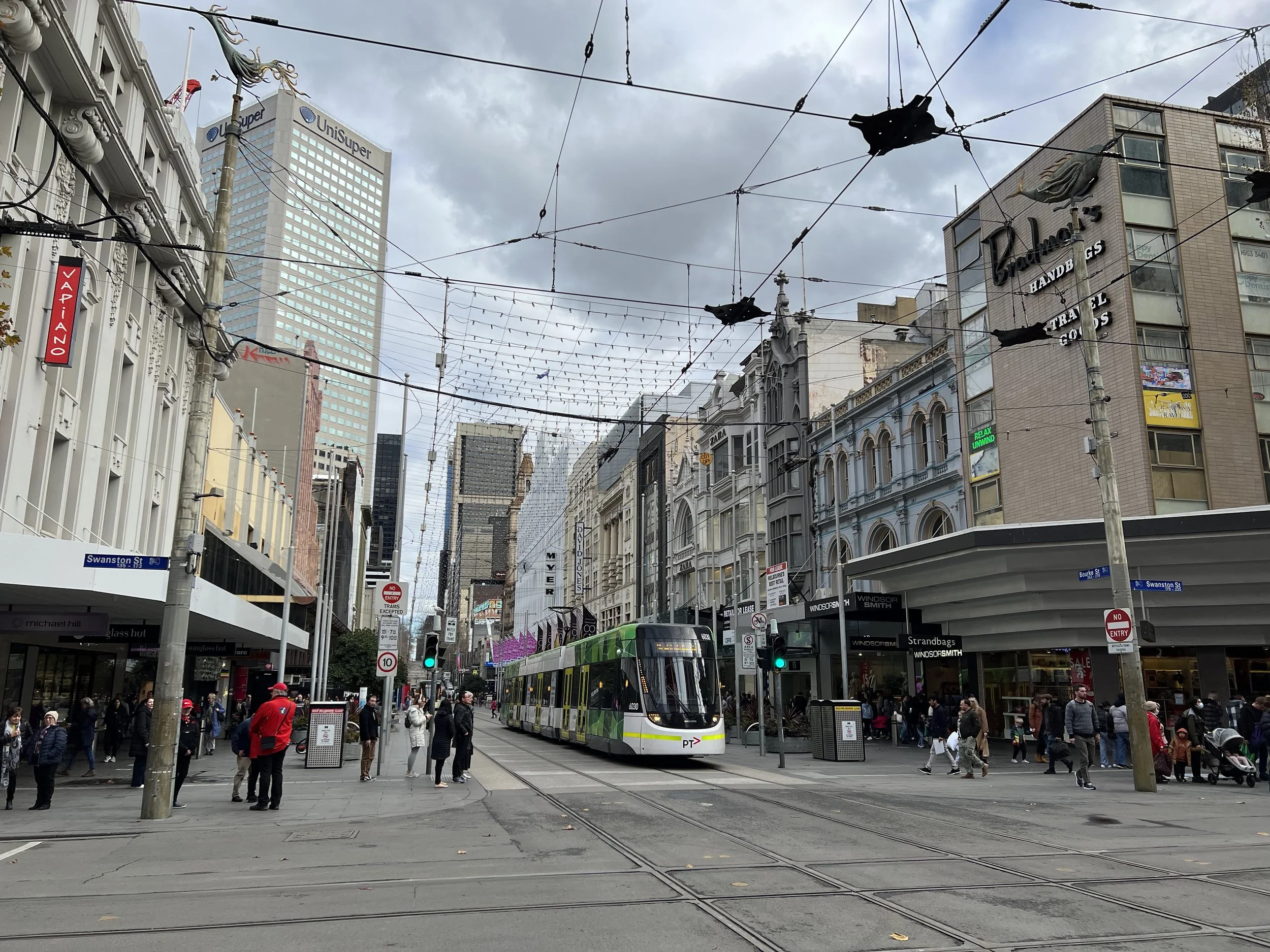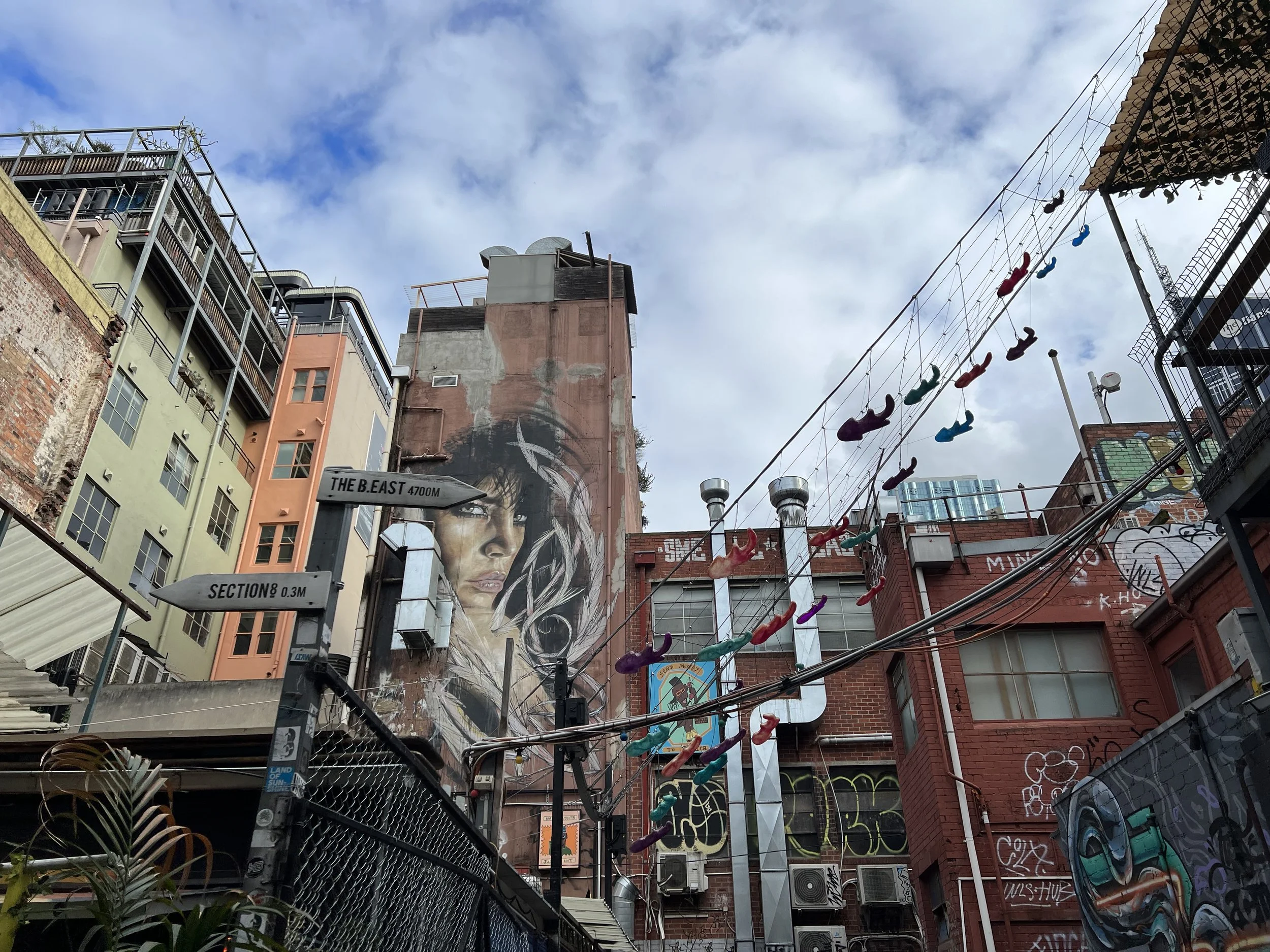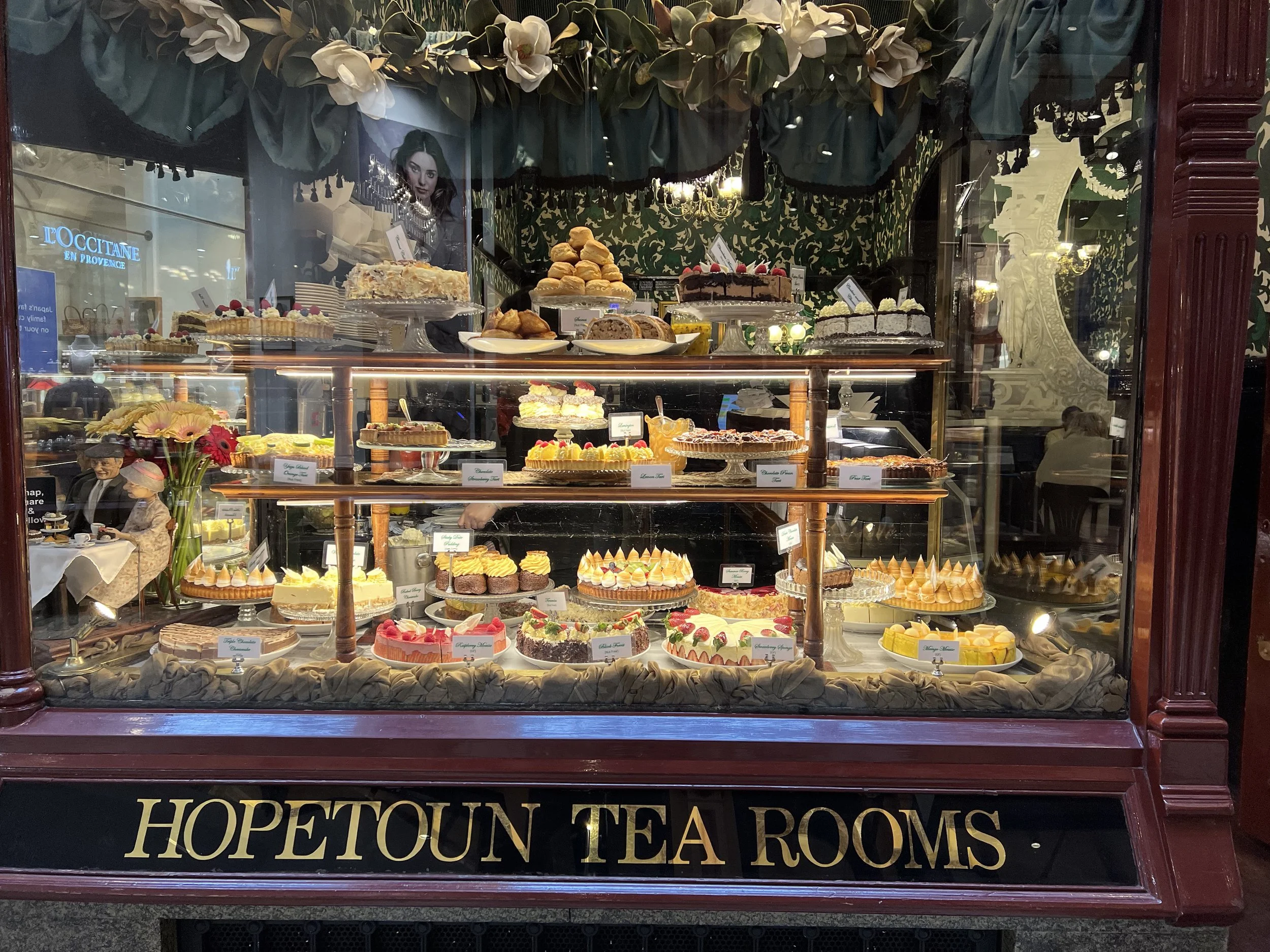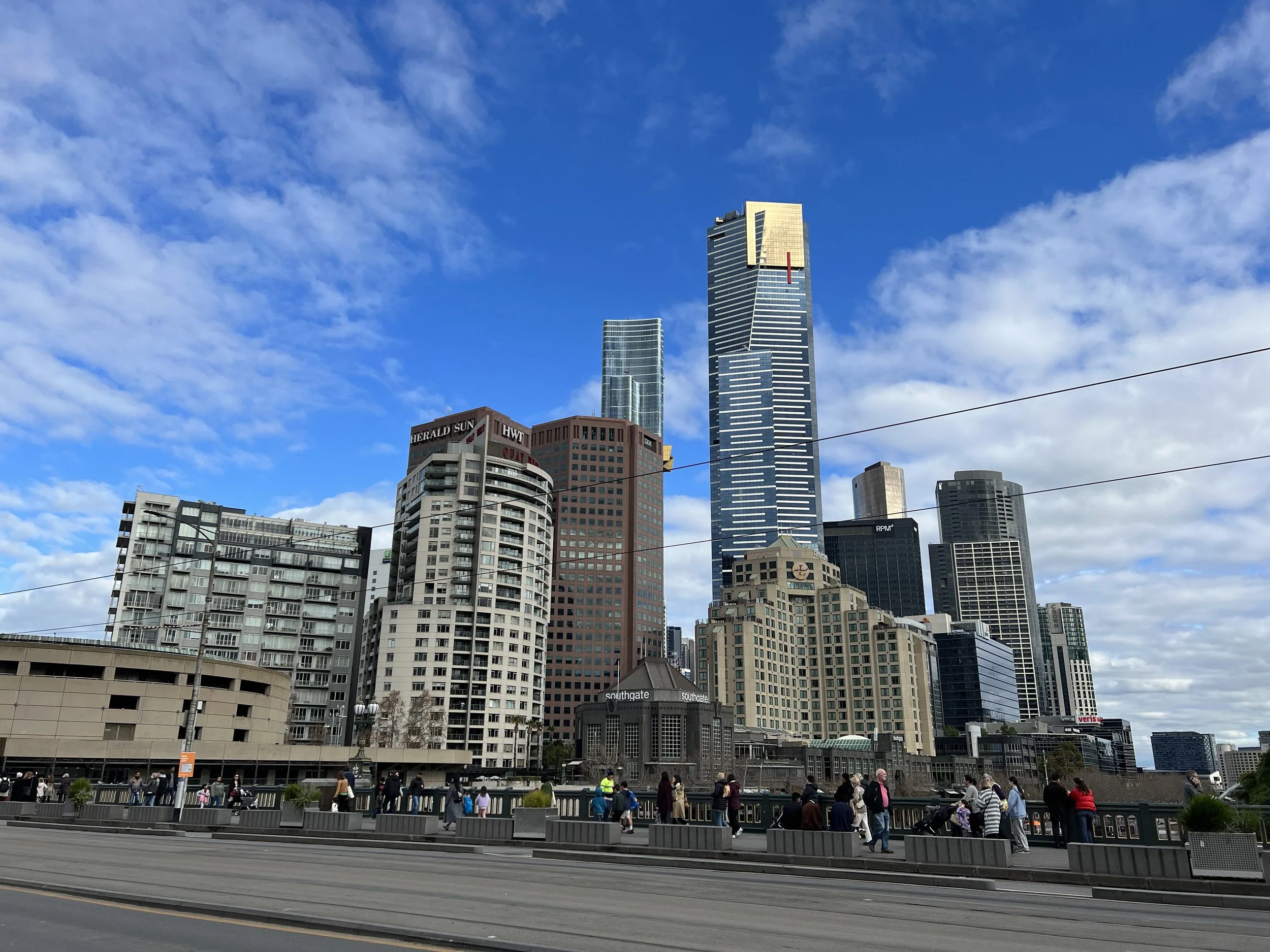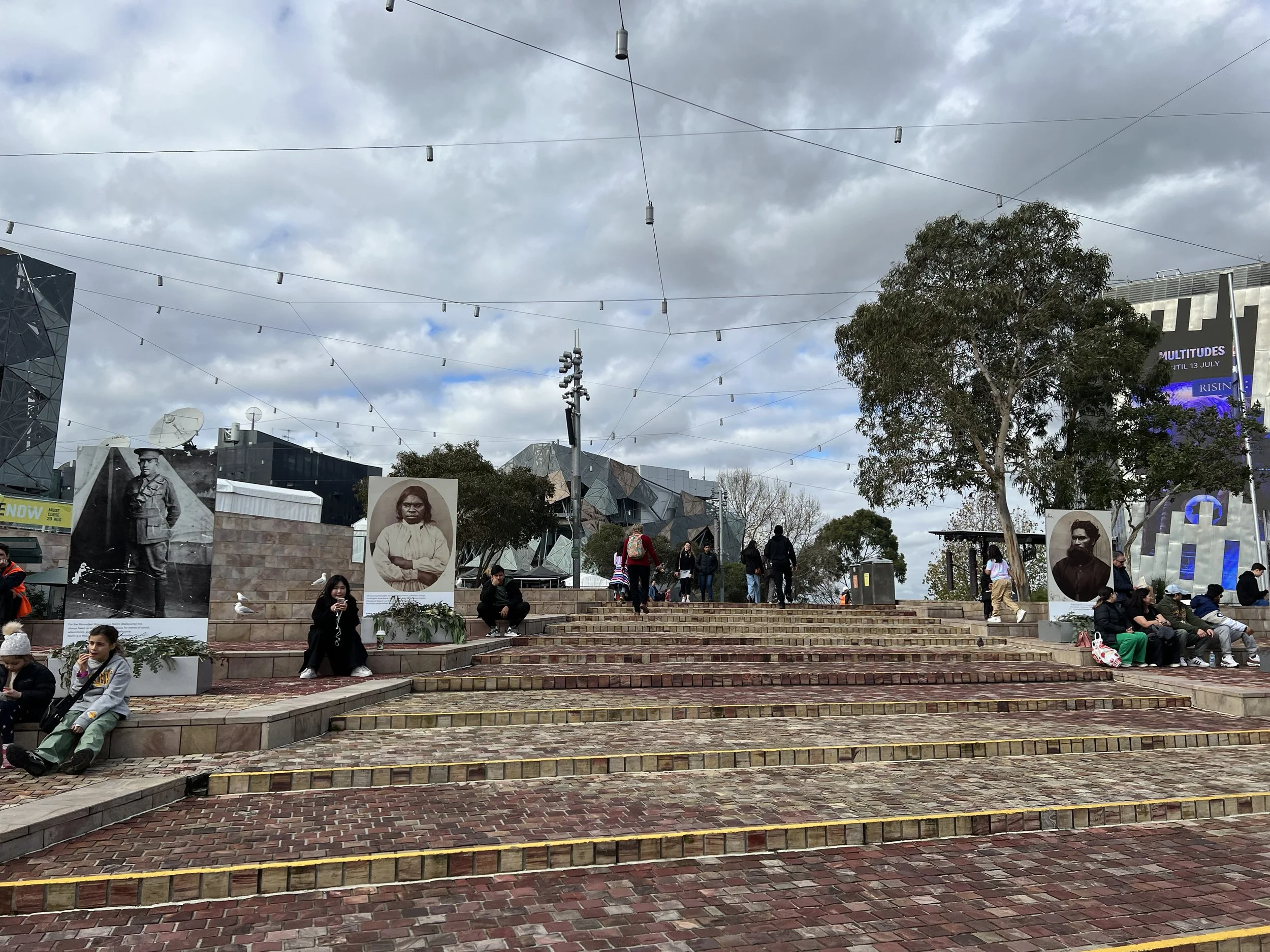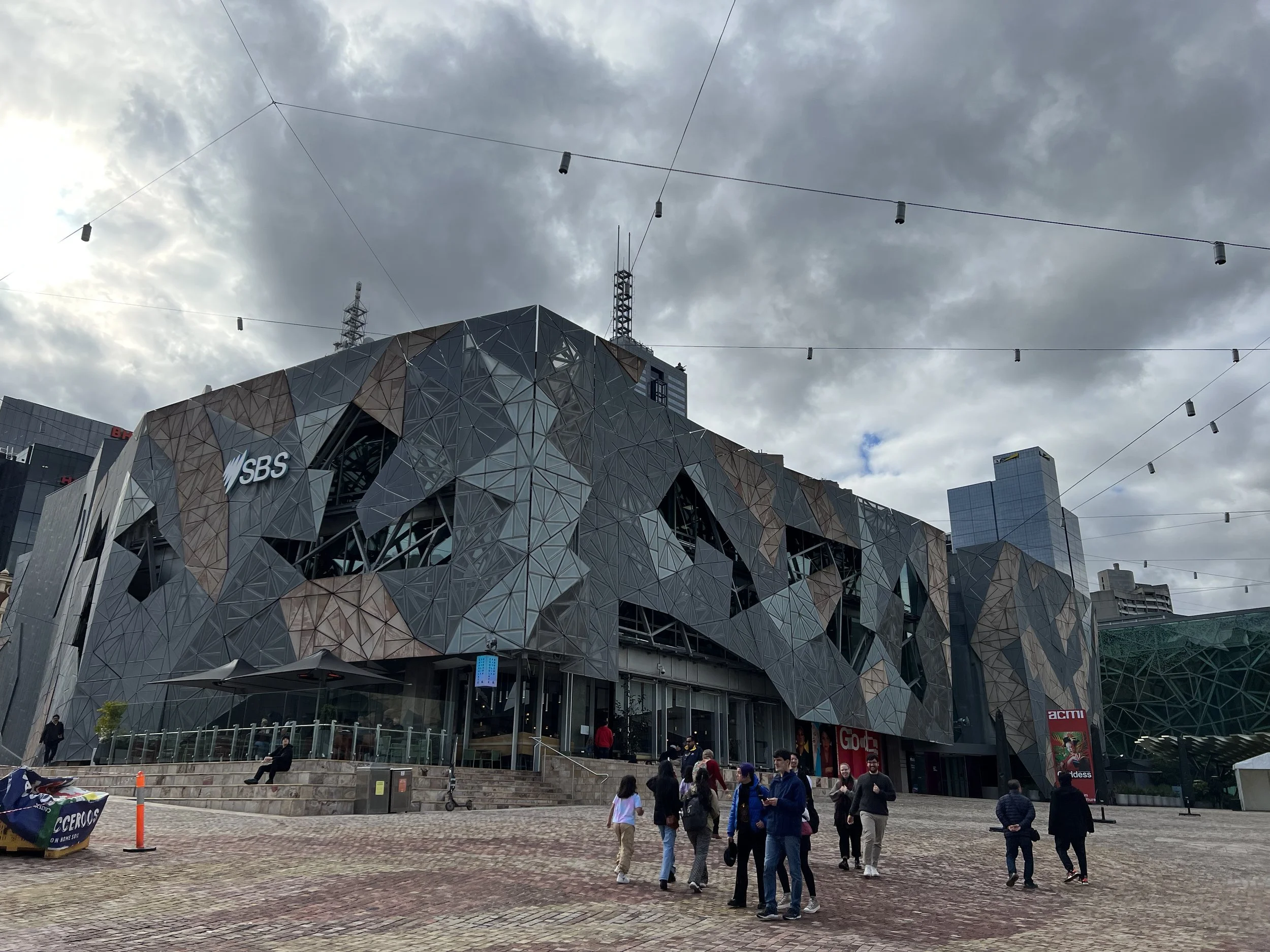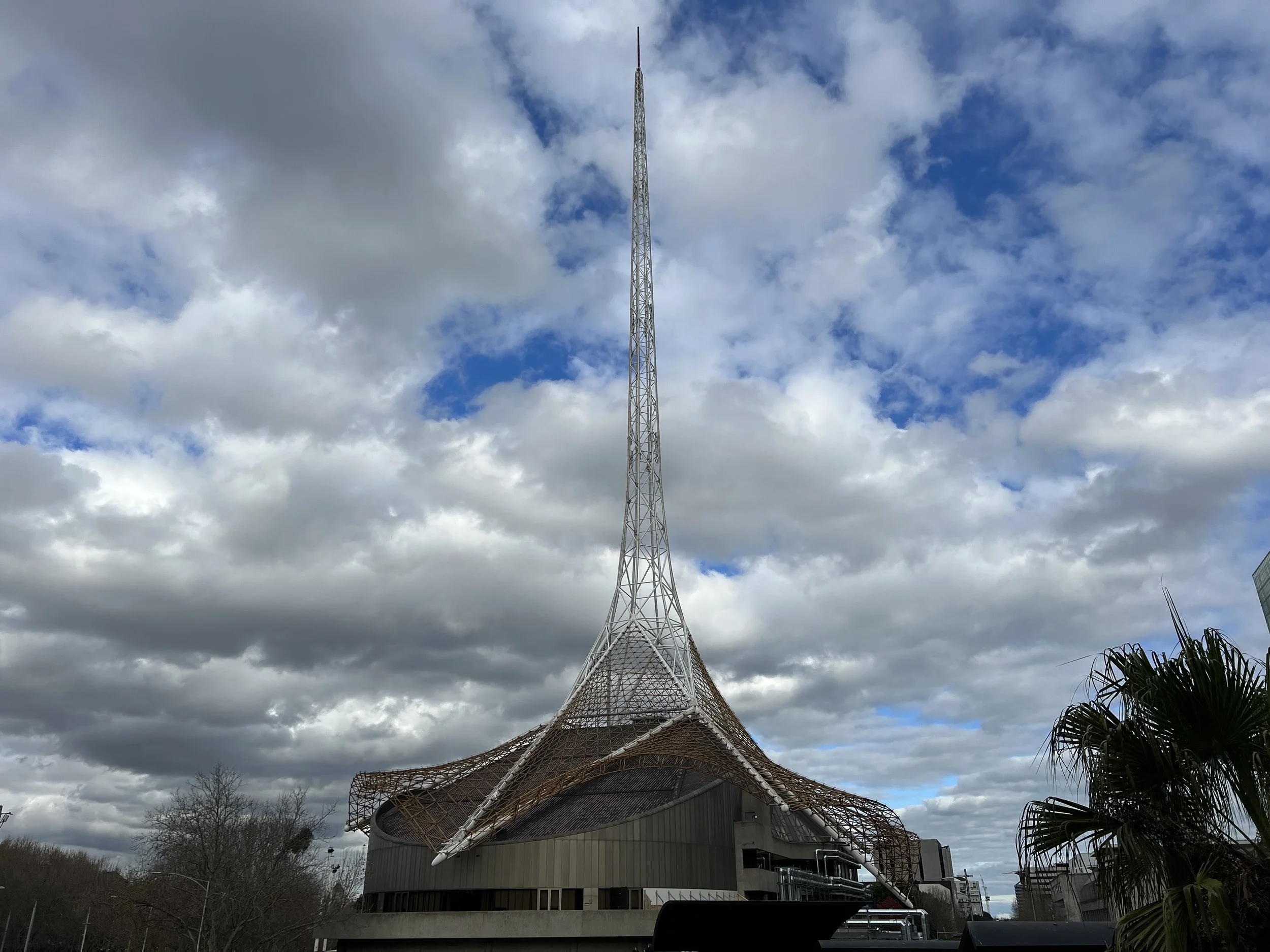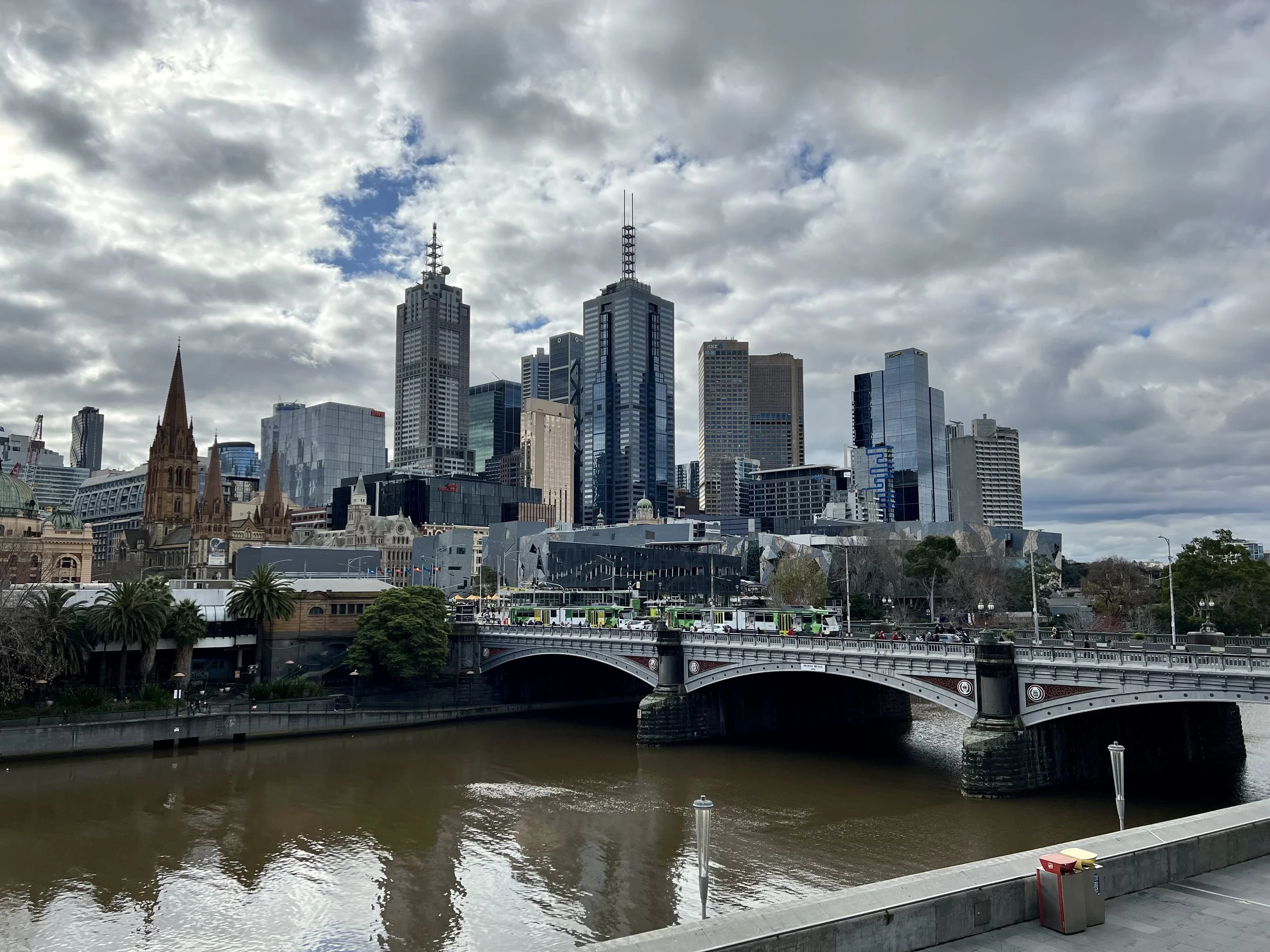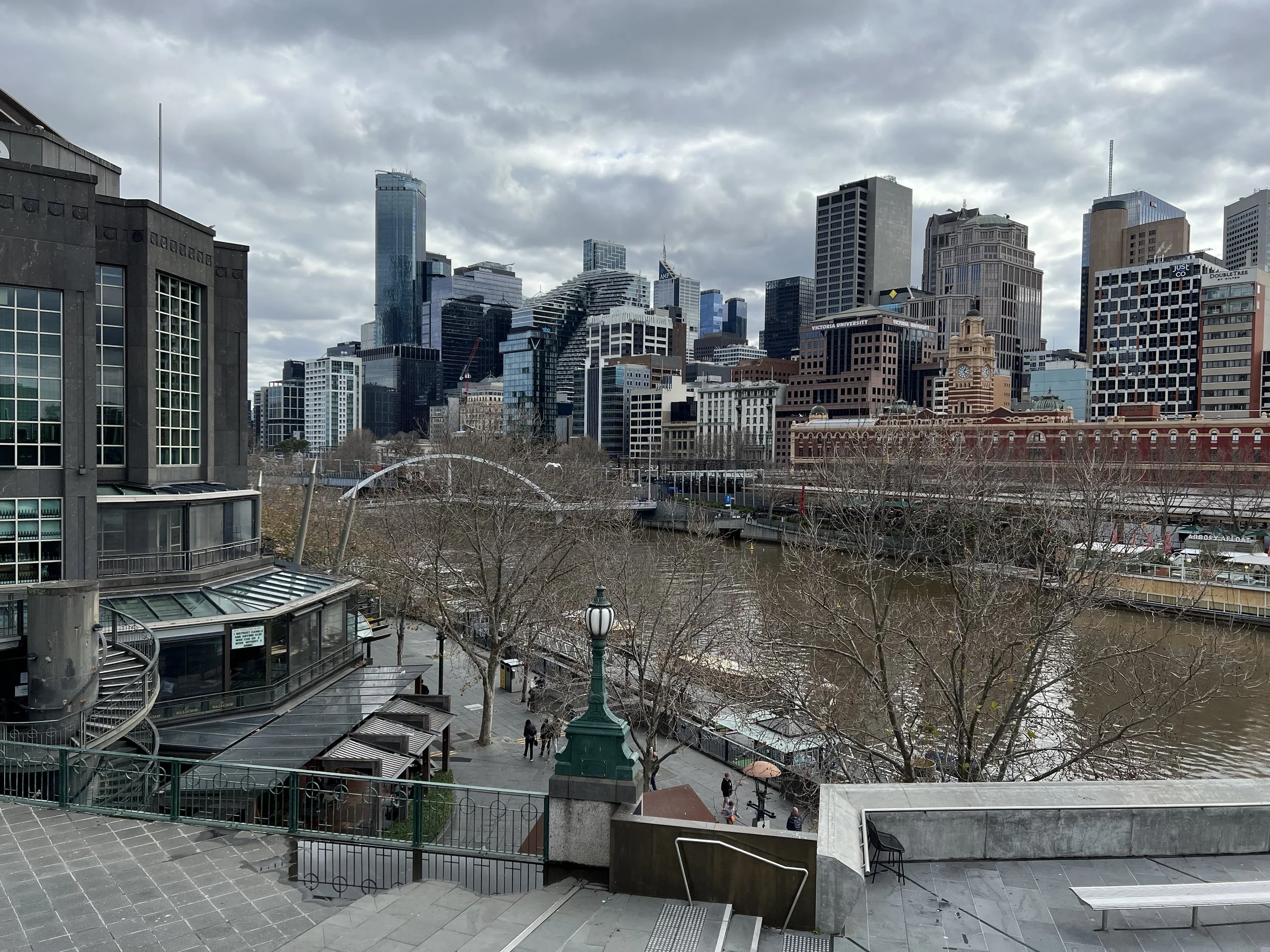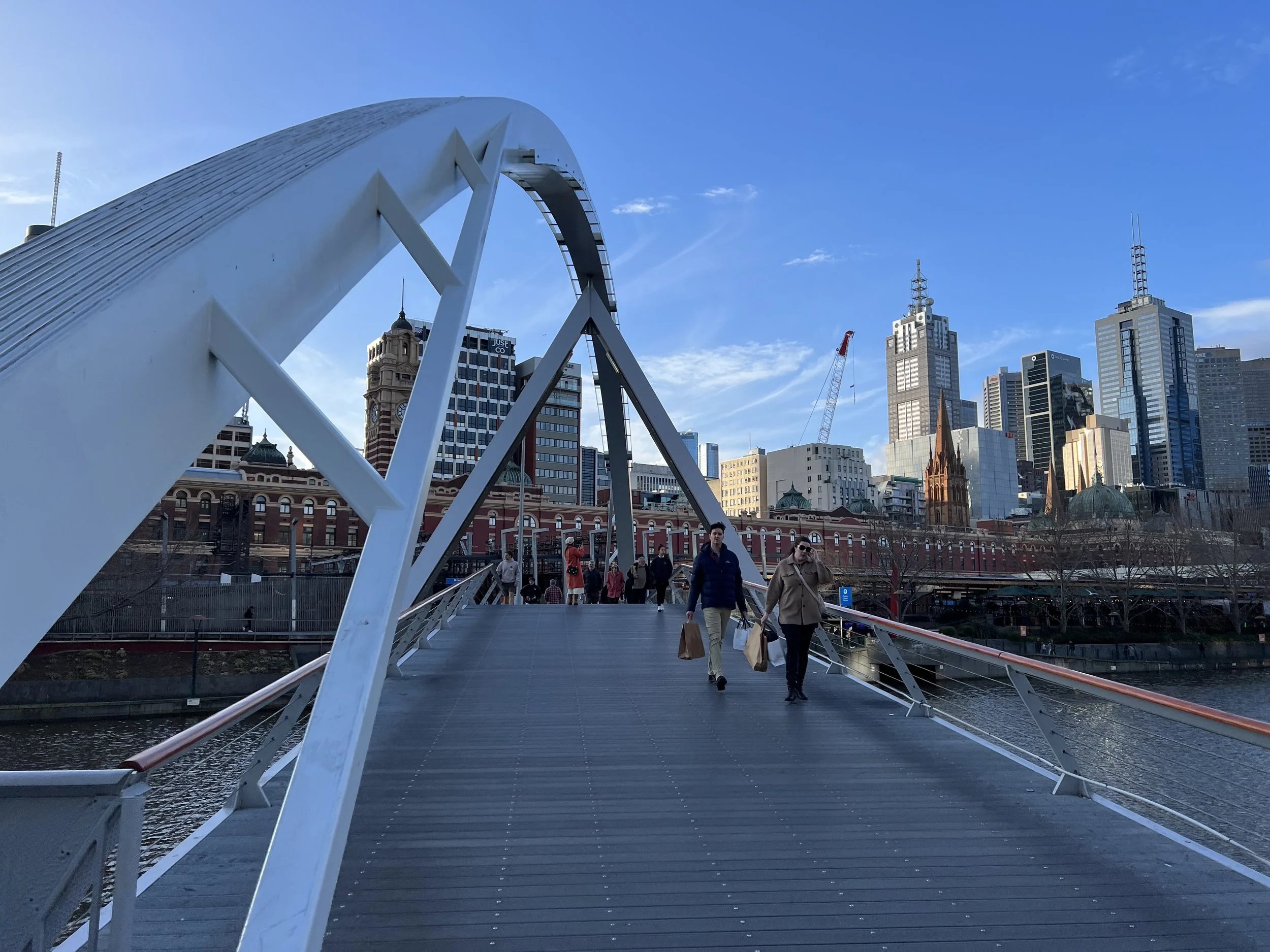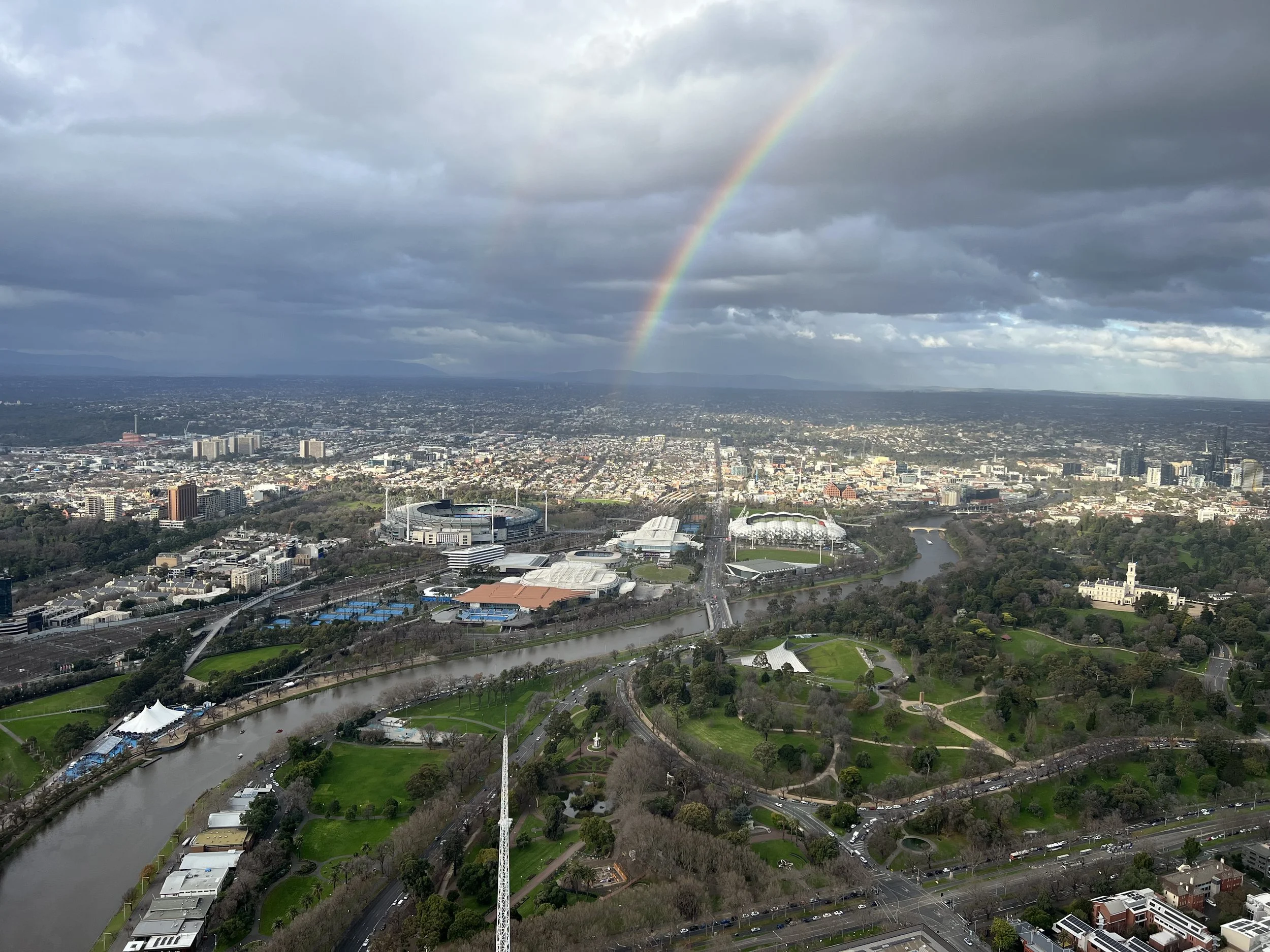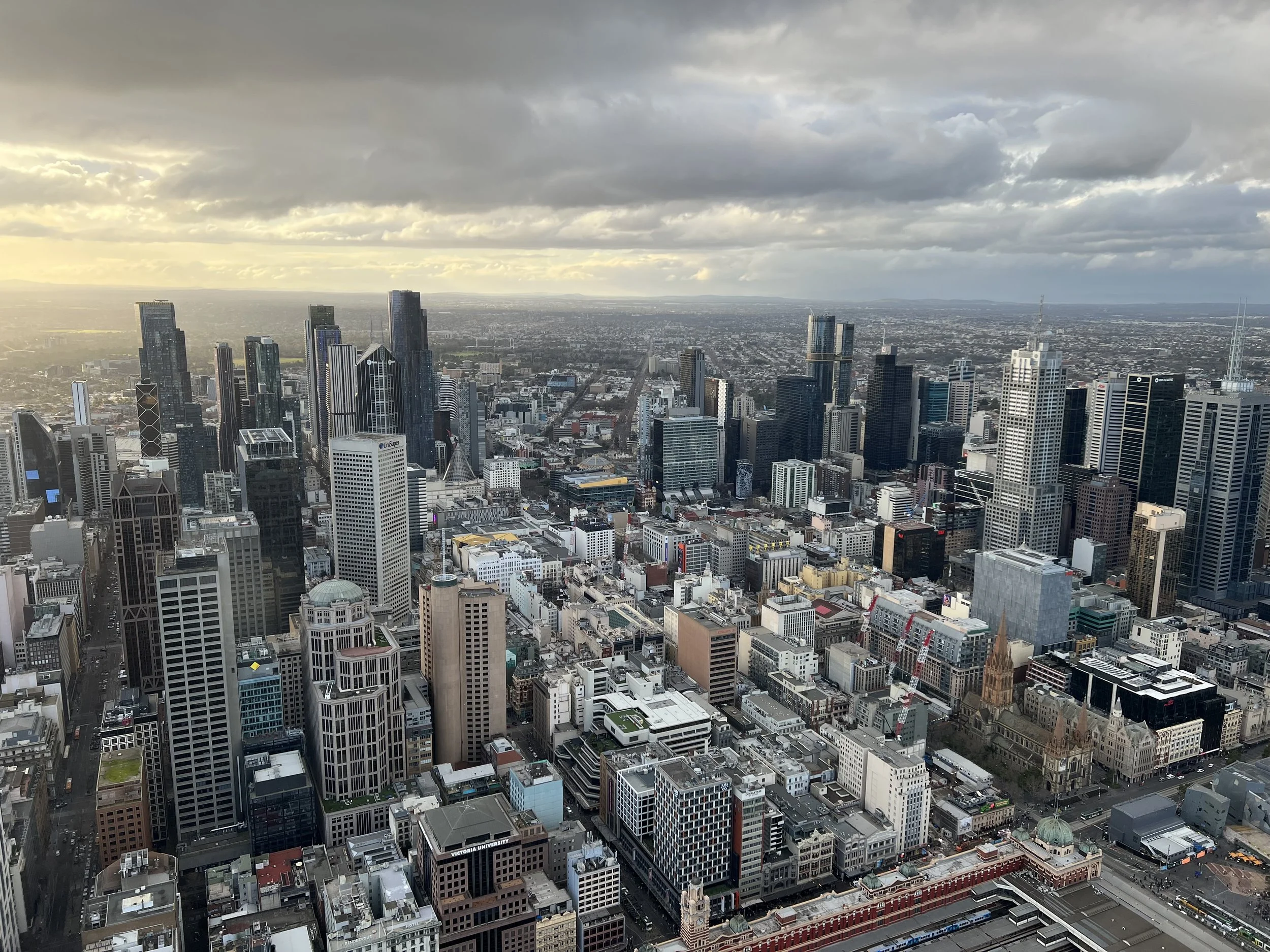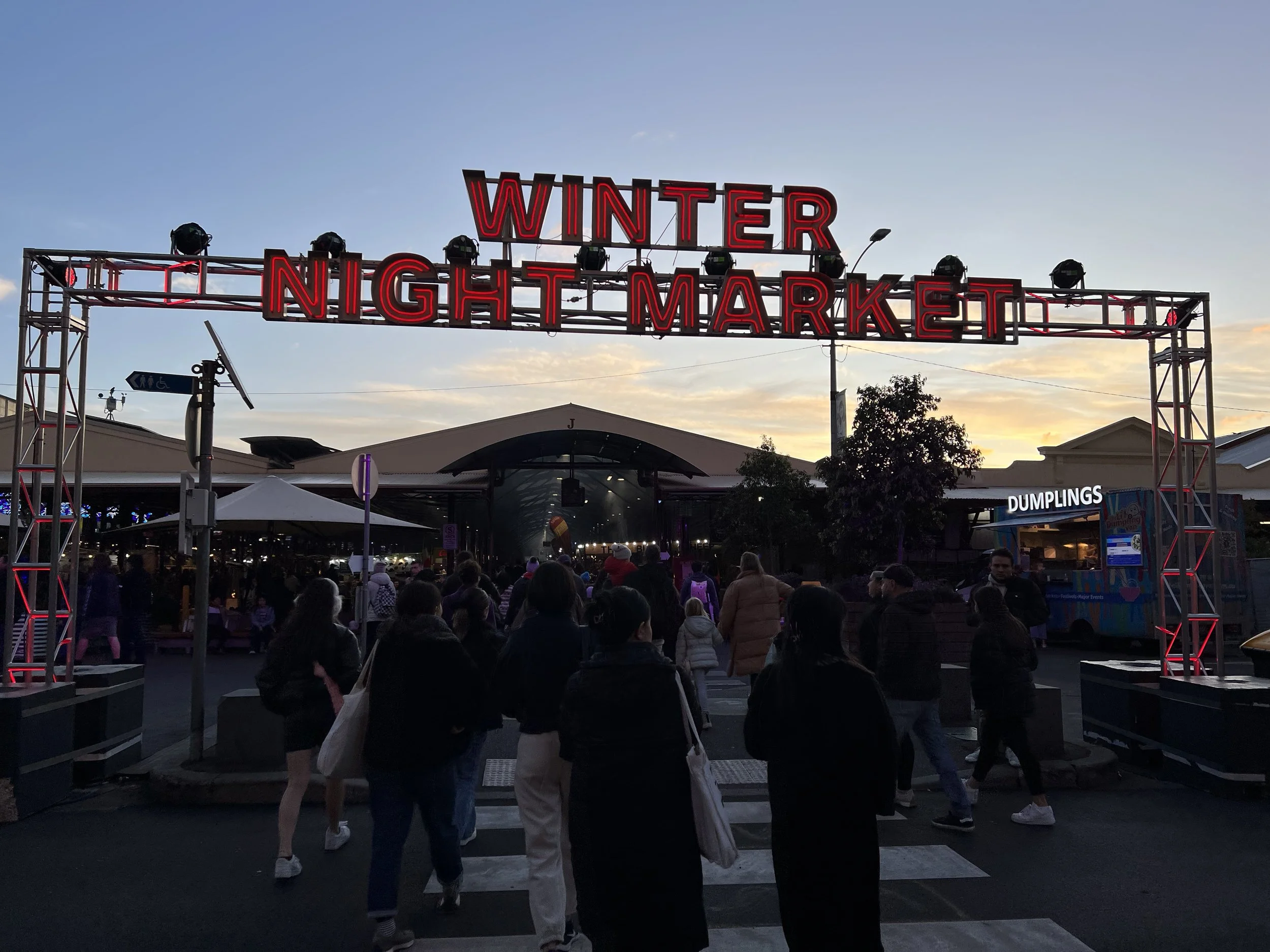Melbourne Central Business District - Victoria, Australia
One of my favourite ways to get to know a new city is simply by walking through it, and Melbourne’s Central Business District turned out to be perfect for that kind of exploration. I had mapped out a handful of places I wanted to see, and because so many of Melbourne’s key landmarks are clustered close together, planning my route was surprisingly easy. With my backpack still on from the airport, I stepped off the SkyBus at Southern Cross Station ready to stretch my legs and get a feel for the city.
My first stop was Queen Victoria Market. I’d expected mostly produce and food stands, but there were far more clothing stalls than I anticipated. Still, the bustle was energetic, and I wandered through the aisles, grabbing a quick snack and checking out a few cafés and food trucks. Opened in 1878, Queen Victoria Market is the largest and most intact surviving 19th-century market in Melbourne, and walking through it really does transport you back in time—if you can see past the souvenir shirts and novelty socks.
After a short break and a bit of browsing, I continued on to State Library Victoria. Established in 1854, it was one of the first free public libraries in the world. The moment I stepped inside, I was struck by the grandeur of the La Trobe Reading Room—its dome, symmetry, and quiet atmosphere make it one of the most beautiful reading rooms I’ve ever seen. As much as I wanted to linger, hunger was starting to kick in, so I moved on toward Chinatown.
Marked by a traditional Chinese gate strung with lanterns, Melbourne’s Chinatown is vibrant and full of options for food lovers. I decided to try Tim Ho Wan, a Michelin-starred dim sum restaurant that had been highly recommended to me. As someone who gets authentic dim sum back home in Vancouver, my expectations were admittedly high. The meal wasn’t quite what I hoped for—I’ve had better back home—but the prices were reasonable and at least I left feeling full for the next leg of my walking adventure.
From there, I made my way to Royal Arcade. Dating back to 1870, this elegant shopping arcade is one of the oldest in Melbourne and was designed by Charles Webb in the Italianate style. I found myself admiring the architecture more than the shops. I then wandered over to Block Arcade, another beautifully preserved arcade, and stumbled upon Haigh’s Chocolates. They’ve been crafting chocolates since 1915, and after sampling a few pieces, I couldn’t resist picking up a box for souvenirs—and another for myself.
My walk continued toward Flinders Street Station, with stops along the way at St Paul’s Cathedral, Hosier Lane, and Federation Square. Hosier Lane, covered from end to end in street art, was fascinating and clearly a favourite among photographers. Federation Square, with its abstract architecture, geometric steps, and open plaza framed by downtown skyscrapers, was equally photogenic. Simply wandering through the area gave me a sense of how modern and artistic Melbourne can be.
Crossing the Yarra River, I headed to the Melbourne Skydeck, the observation deck perched on the 88th floor of the Eureka Tower. The panoramic views were incredible, and the glass cube that extends from the building—The Edge—offered an experience that definitely isn’t for anyone afraid of heights. After soaking in the scenery, I made my way back across the river toward the Immigration Museum and eventually looped back to Southern Cross Station.
By then my backpack felt like it weighed a ton, so I checked into my hotel for a short break before heading out again—to the Winter Night Market at Queen Victoria Market. A friend joined me, and even though we arrived before the 5 p.m. opening, the line was already huge. Thankfully, it moved quickly, and once inside we wandered through the food trucks, craft stalls, and dessert vendors. It was energetic, colourful, and the perfect way to wrap up a full day of exploring the city.
History & Background
Melbourne’s Central Business District is the historic and cultural heart of the city, shaped by waves of immigration, gold rush prosperity, and a strong tradition of arts and education. Many of its most recognizable landmarks—Queen Victoria Market, Flinders Street Station, the State Library, and the Victorian-era shopping arcades—remain well-preserved examples of 19th-century architecture. At the same time, the CBD is a hub of innovation, filled with contemporary galleries, modern high-rises, and vibrant laneways covered in street art. The contrast between old and new is one of Melbourne’s defining characteristics. With efficient public transport, walkable streets, and countless cafés, the CBD is often considered one of the best areas for travellers to explore on foot and get an authentic feel for the city’s character.
Getting There
The Melbourne CBD is easily accessible from the airport via the SkyBus, which drops passengers directly at Southern Cross Station, making it a convenient starting point for city exploration. Once you’re in the downtown core, most major landmarks are within walking distance of one another, and the free tram zone makes it even easier to get around without spending on transit. For this visit, I arrived by bus from the airport and walked between each spot, discovering cafés, heritage buildings, and unexpected photo opportunities along the way. Melbourne is designed for pedestrians, and the grid layout of the CBD makes navigation straightforward even for first-time visitors.
Route Overview
Distance: 11.89 km out & back (Southern Cross Train Station)
Total elevation gain: 75 m
Duration: 2 hr 46 min (with breaks 3 hr 52 min)
Difficulty: Easy
Cost Breakdown
Food: AU$65.95
Entrance Fee: Melbourne Skydeck — AU$30
Souvenir: AU$20
